541 low relevance results shown for 'Red'. Prev |1|2|3|4|5|6|7|8|9|10|11|12|13|14|15|16|17|18|19|20|21|22 | Next | View 100 per page
Showing low relevance matches only. Return to normal search results
DNA - The transmission of heritable characteristics from one generation to the next involves DNA and genes ACSSU097 Year 6 Physical Sciences
Electrical Circuits - Electrical energy can be transferred and transformed in electrical circuits and can be generated from a range of sources ACSSU115 Year 7 Earth and Space Sciences
Earth Moon Sun - Predictable phenomena on Earth, including seasons and eclipses, are caused by the relative positions of the sun, Earth and the moon ACSSU229 Year 10 Physical Sciences
Forces and Motion - The motion of objects can be described and predicted using the laws of physics ACSBL029 Year 11 Biodiversity and the interconnectedness of life
Ecosystem dynamics - Models of ecosystem interactions (for example, food webs, successional models) can be used to predict the impact of change and are based on interpretation of and extrapolation from sample data (for example, data derived from ecosystem surveying techniques ACSBL085 Year 12 Heredity and continuity of life
DNA genes and the continuity of life - Frequencies of genotypes and phenotypes of offspring can be predicted using probability models, including Punnett squares, and by taking into consideration patterns of inheritance, including the effects of dominant, autosomal and sex-linked alleles and mu ACSBL090 Year 12 Heredity and continuity of life
Continuity of life on Earth - Natural selection occurs when selection pressures in the environment confer a selective advantage on a specific phenotype to enhance its survival and reproduction; this results in changes in allele frequency in the gene pool of a population ACSBL091 Year 12 Heredity and continuity of life
Continuity of life on Earth - In additional to environmental selection pressures, mutation, gene flow and genetic drift can contribute to changes in allele frequency in a population gene pool and results in microevolutionary change ACSCH056 Year 11 Molecular interactions and reactions
Intermolecular forces and gases - The shapes of molecules can be explained and predicted using three dimensional representations of electrons as charge clouds and using valence shell electron pair repulsion (VSEPR) theory ACSCH073 Year 11 Molecular interactions and reactions
Rates of chemical reactions - Catalysts, including enzymes and metal nanoparticles, affect the rate of certain reactions by providing an alternative reaction pathway with a reduced activation energy, hence increasing the proportion of collisions that lead to a chemical change ACSCH091 Year 12 Equilibrium acids and redox reactions
Chemical equilibrium systems - Over time, physical changes and reversible chemical reactions reach a state of dynamic equilibrium in a closed system, with the relative concentrations of products and reactants defining the position of equilibrium ACSCH096 Year 12 Equilibrium acids and redox reactions
Chemical equilibrium systems - Equilibrium position can be predicted qualitatively using equilibrium constants ACSCH097 Year 12 Equilibrium acids and redox reactions
Chemical equilibrium systems - Acids are substances that can act as proton (hydrogen ion) donors and can be classified as monoprotic or polyprotic depending on the number of protons donated by each molecule of the acid ACSCH098 Year 12 Equilibrium acids and redox reactions
Chemical equilibrium systems - The strength of acids is explained by the degree of ionisation at equilibrium in aqueous solution, which can be represented with chemical equations and equilibrium constants (Ka) ACSCH099 Year 12 Equilibrium acids and redox reactions
Chemical equilibrium systems - The relationship between acids and bases in equilibrium systems can be explained using the Brønsted Lowry model and represented using chemical equations that illustrate the transfer of hydrogen ions ACSCH100 Year 12 Equilibrium acids and redox reactions
Chemical equilibrium systems - The pH scale is a logarithmic scale and the pH of a solution can be calculated from the concentration of hydrogen ions; Kw can be used to calculate the concentration of hydrogen ions from the concentration of hydroxide ions in a solution ACSCH101 Year 12 Equilibrium acids and redox reactions
Chemical equilibrium systems - Acidbase indicators are weak acids or bases where the acidic form is of a different colour to the basic form ACSCH102 Year 12 Equilibrium acids and redox reactions
Chemical equilibrium systems - Volumetric analysis methods involving acidbase reactions rely on the identification of an equivalence point by measuring the associated change in pH, using chemical indicators or pH meters, to reveal an observable end point ACSCH103 Year 12 Equilibrium acids and redox reactions
Oxidation and reduction - A range of reactions, including displacement reactions of metals, combustion, corrosion, and electrochemical processes, can be modelled as redox reactions involving oxidation of one substance and reduction of another substance ACSCH104 Year 12 Equilibrium acids and redox reactions
Oxidation and reduction - Oxidation can be modelled as the loss of electrons from a chemical species, and reduction can be modelled as the gain of electrons by a chemical species; these processes can be represented using half equations ACSCH106 Year 12 Equilibrium acids and redox reactions
Oxidation and reduction - The relative strength of oxidising and reducing agents can be determined by comparing standard electrode potentials ACSCH107 Year 12 Equilibrium acids and redox reactions
Oxidation and reduction - Electrochemical cells, including galvanic and electrolytic cells, consist of oxidation and reduction half reactions connected via an external circuit that allows electrons to move from the anode (oxidation reaction) to the cathode (reduction reaction) ACSCH108 Year 12 Equilibrium acids and redox reactions
Oxidation and reduction - Galvanic cells, including fuel cells, generate an electrical potential difference from a spontaneous redox reaction; they can be represented as cell diagrams including anode and cathode halfequations ACSCH110 Year 12 Equilibrium acids and redox reactions
Oxidation and reduction - Cell potentials at standard conditions can be calculated from standard electrode potentials; these values can be used to compare cells constructed from different materials ACSCH130 Year 12 Structure synthesis and design
Properties and structure of organic materials - Data from analytical techniques, including mass spectrometry, xray crystallography and infrared spectroscopy, can be used to determine the structure of organic molecules, often using evidence from more than one technique ACSPH040 Year 11 Thermal nuclear and electrical physics
Electrical circuits - The energy available to charges moving in an electrical circuit is measured using electric potential difference, which is defined as the change in potential energy per unit charge between two defined points in the circuit ACSPH041 Year 11 Thermal nuclear and electrical physics
Electrical circuits - Energy is required to separate positive and negative charge carriers; charge separation produces an electrical potential difference that can be used to drive current in circuits ACSPH061 Year 11 Linear Motion and Waves
Linear motion and force - Representations, including graphs and vectors, and/or equations of motion, can be used qualitatively and quantitatively to describe and predict linear motion ACSPH064 Year 11 Linear Motion and Waves
Linear motion and force - Momentum is a property of moving objects; it is conserved in a closed system and may be transferred from one object to another when a force acts over a time interval ACSPH065 Year 11 Linear Motion and Waves
Linear motion and force - Energy is conserved in isolated systems and is transferred from one object to another when a force is applied over a distance; this causes work to be done and changes to kinetic and/or potential energy of objects ACSPH073 Year 11 Linear Motion and Waves
Waves - A mechanical system resonates when it is driven at one of its natural frequencies of oscillation; energy is transferred efficiently into systems under these conditions ACSPH076 Year 11 Linear Motion and Waves
Waves - A wave model explains a wide range of lightrelated phenomena including reflection, refraction, total internal reflection, dispersion, diffraction and interference; a transverse wave model is required to explain polarisation ACSPH021 Year 11 Thermal nuclear and electrical physics
Heating processes - Change of state involves internal energy changes to form or break bonds between atoms or molecules; latent heat is the energy required to be added to or removed from a system to change the state of the system
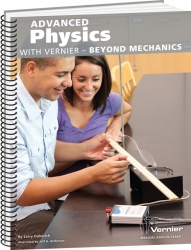

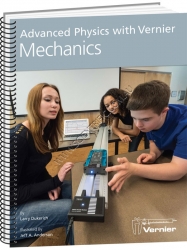



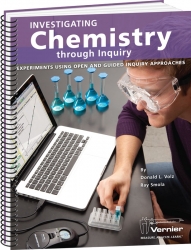

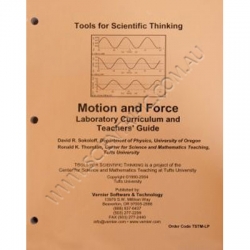
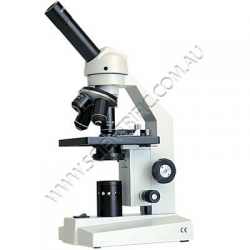
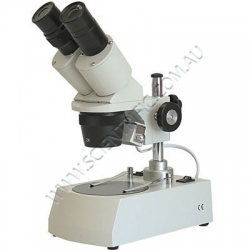



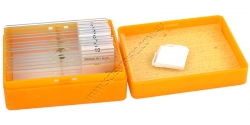
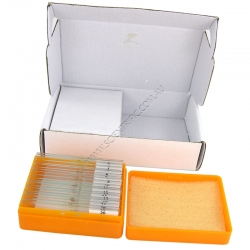
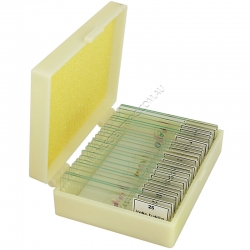
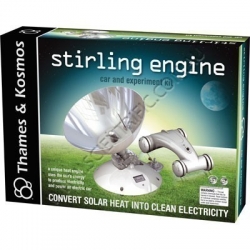
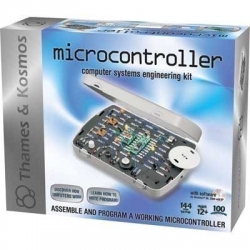
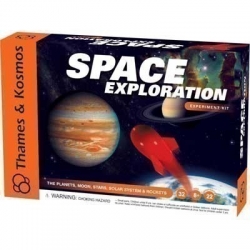

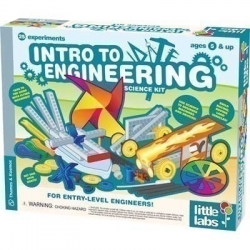
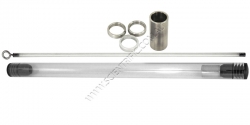
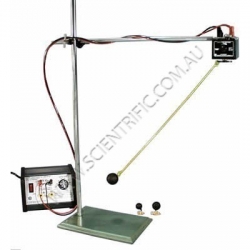
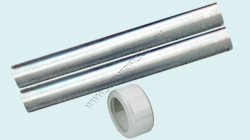
541 low relevance results shown for 'Red'. Prev |1|2|3|4|5|6|7|8|9|10|11|12|13|14|15|16|17|18|19|20|21|22 | Next | View 100 per page
Showing low relevance matches only. Return to normal search results
Curriculum resources related to 'Red'
ACSSU184 Year 10 Biological SciencesDNA - The transmission of heritable characteristics from one generation to the next involves DNA and genes ACSSU097 Year 6 Physical Sciences
Electrical Circuits - Electrical energy can be transferred and transformed in electrical circuits and can be generated from a range of sources ACSSU115 Year 7 Earth and Space Sciences
Earth Moon Sun - Predictable phenomena on Earth, including seasons and eclipses, are caused by the relative positions of the sun, Earth and the moon ACSSU229 Year 10 Physical Sciences
Forces and Motion - The motion of objects can be described and predicted using the laws of physics ACSBL029 Year 11 Biodiversity and the interconnectedness of life
Ecosystem dynamics - Models of ecosystem interactions (for example, food webs, successional models) can be used to predict the impact of change and are based on interpretation of and extrapolation from sample data (for example, data derived from ecosystem surveying techniques ACSBL085 Year 12 Heredity and continuity of life
DNA genes and the continuity of life - Frequencies of genotypes and phenotypes of offspring can be predicted using probability models, including Punnett squares, and by taking into consideration patterns of inheritance, including the effects of dominant, autosomal and sex-linked alleles and mu ACSBL090 Year 12 Heredity and continuity of life
Continuity of life on Earth - Natural selection occurs when selection pressures in the environment confer a selective advantage on a specific phenotype to enhance its survival and reproduction; this results in changes in allele frequency in the gene pool of a population ACSBL091 Year 12 Heredity and continuity of life
Continuity of life on Earth - In additional to environmental selection pressures, mutation, gene flow and genetic drift can contribute to changes in allele frequency in a population gene pool and results in microevolutionary change ACSCH056 Year 11 Molecular interactions and reactions
Intermolecular forces and gases - The shapes of molecules can be explained and predicted using three dimensional representations of electrons as charge clouds and using valence shell electron pair repulsion (VSEPR) theory ACSCH073 Year 11 Molecular interactions and reactions
Rates of chemical reactions - Catalysts, including enzymes and metal nanoparticles, affect the rate of certain reactions by providing an alternative reaction pathway with a reduced activation energy, hence increasing the proportion of collisions that lead to a chemical change ACSCH091 Year 12 Equilibrium acids and redox reactions
Chemical equilibrium systems - Over time, physical changes and reversible chemical reactions reach a state of dynamic equilibrium in a closed system, with the relative concentrations of products and reactants defining the position of equilibrium ACSCH096 Year 12 Equilibrium acids and redox reactions
Chemical equilibrium systems - Equilibrium position can be predicted qualitatively using equilibrium constants ACSCH097 Year 12 Equilibrium acids and redox reactions
Chemical equilibrium systems - Acids are substances that can act as proton (hydrogen ion) donors and can be classified as monoprotic or polyprotic depending on the number of protons donated by each molecule of the acid ACSCH098 Year 12 Equilibrium acids and redox reactions
Chemical equilibrium systems - The strength of acids is explained by the degree of ionisation at equilibrium in aqueous solution, which can be represented with chemical equations and equilibrium constants (Ka) ACSCH099 Year 12 Equilibrium acids and redox reactions
Chemical equilibrium systems - The relationship between acids and bases in equilibrium systems can be explained using the Brønsted Lowry model and represented using chemical equations that illustrate the transfer of hydrogen ions ACSCH100 Year 12 Equilibrium acids and redox reactions
Chemical equilibrium systems - The pH scale is a logarithmic scale and the pH of a solution can be calculated from the concentration of hydrogen ions; Kw can be used to calculate the concentration of hydrogen ions from the concentration of hydroxide ions in a solution ACSCH101 Year 12 Equilibrium acids and redox reactions
Chemical equilibrium systems - Acidbase indicators are weak acids or bases where the acidic form is of a different colour to the basic form ACSCH102 Year 12 Equilibrium acids and redox reactions
Chemical equilibrium systems - Volumetric analysis methods involving acidbase reactions rely on the identification of an equivalence point by measuring the associated change in pH, using chemical indicators or pH meters, to reveal an observable end point ACSCH103 Year 12 Equilibrium acids and redox reactions
Oxidation and reduction - A range of reactions, including displacement reactions of metals, combustion, corrosion, and electrochemical processes, can be modelled as redox reactions involving oxidation of one substance and reduction of another substance ACSCH104 Year 12 Equilibrium acids and redox reactions
Oxidation and reduction - Oxidation can be modelled as the loss of electrons from a chemical species, and reduction can be modelled as the gain of electrons by a chemical species; these processes can be represented using half equations ACSCH106 Year 12 Equilibrium acids and redox reactions
Oxidation and reduction - The relative strength of oxidising and reducing agents can be determined by comparing standard electrode potentials ACSCH107 Year 12 Equilibrium acids and redox reactions
Oxidation and reduction - Electrochemical cells, including galvanic and electrolytic cells, consist of oxidation and reduction half reactions connected via an external circuit that allows electrons to move from the anode (oxidation reaction) to the cathode (reduction reaction) ACSCH108 Year 12 Equilibrium acids and redox reactions
Oxidation and reduction - Galvanic cells, including fuel cells, generate an electrical potential difference from a spontaneous redox reaction; they can be represented as cell diagrams including anode and cathode halfequations ACSCH110 Year 12 Equilibrium acids and redox reactions
Oxidation and reduction - Cell potentials at standard conditions can be calculated from standard electrode potentials; these values can be used to compare cells constructed from different materials ACSCH130 Year 12 Structure synthesis and design
Properties and structure of organic materials - Data from analytical techniques, including mass spectrometry, xray crystallography and infrared spectroscopy, can be used to determine the structure of organic molecules, often using evidence from more than one technique ACSPH040 Year 11 Thermal nuclear and electrical physics
Electrical circuits - The energy available to charges moving in an electrical circuit is measured using electric potential difference, which is defined as the change in potential energy per unit charge between two defined points in the circuit ACSPH041 Year 11 Thermal nuclear and electrical physics
Electrical circuits - Energy is required to separate positive and negative charge carriers; charge separation produces an electrical potential difference that can be used to drive current in circuits ACSPH061 Year 11 Linear Motion and Waves
Linear motion and force - Representations, including graphs and vectors, and/or equations of motion, can be used qualitatively and quantitatively to describe and predict linear motion ACSPH064 Year 11 Linear Motion and Waves
Linear motion and force - Momentum is a property of moving objects; it is conserved in a closed system and may be transferred from one object to another when a force acts over a time interval ACSPH065 Year 11 Linear Motion and Waves
Linear motion and force - Energy is conserved in isolated systems and is transferred from one object to another when a force is applied over a distance; this causes work to be done and changes to kinetic and/or potential energy of objects ACSPH073 Year 11 Linear Motion and Waves
Waves - A mechanical system resonates when it is driven at one of its natural frequencies of oscillation; energy is transferred efficiently into systems under these conditions ACSPH076 Year 11 Linear Motion and Waves
Waves - A wave model explains a wide range of lightrelated phenomena including reflection, refraction, total internal reflection, dispersion, diffraction and interference; a transverse wave model is required to explain polarisation ACSPH021 Year 11 Thermal nuclear and electrical physics
Heating processes - Change of state involves internal energy changes to form or break bonds between atoms or molecules; latent heat is the energy required to be added to or removed from a system to change the state of the system
Products related to 'Red'

Advanced Physics with Vernier Beyond Mechanics
ADVANCED PHYSICS WITH VERNIER – BEYOND MECHANICS
This book is the second of a two-volume set of experiments for a more in-depth introductory physics course in tertiary physics, AP Physics or IB Physics. Experiments are designed for an interactive teaching style with plann...
Order code: PHYS-ABM

Advanced Physics with Vernier Beyond Mechanics - Electronic Version
ADVANCED PHYSICS WITH VERNIER BEYOND MECHANICS - ELECTRONIC
This book is the second of a two-volume set of experiments for a more in-depth introductory physics course in tertiary physics, AP Physics or IB Physics. Experiments are designed for an interactive teaching style...
Order code: PHYS-ABM-E

Advanced Physics with Vernier - Mechanics
ADVANCED PHYSICS WITH VERNIER - MECHANICS
This book is the first of a two-volume set of experiments for a more in-depth introductory physics course in tertiary physics, AP Physics or IB Physics. Experiments are designed for an interactive teaching style with planned momen...
Order code: PHYS-AM

Advanced Physics with Vernier Mechanics - Electronic Version
ADVANCED PHYSICS WITH VERNIER - MECHANICS - ELECTRONIC
This book is the first of a two-volume set of experiments for a more in-depth introductory physics course in tertiary physics, AP Physics or IB Physics. Experiments are designed for an interactive teaching style with ...
Order code: PHYS-AM-E

Vernier Bar Tape Guide
VERNIER BAR TAPE GUIDE
The Bar Tape Guide contains an adaptor that allows Bar Tape to be used with a Vernier Photogate. Bar Tape is 3 m long, and it has alternating opaque and transparent bars that have a spacing of 1.524 cm. The tape can be attached to objects and pulled...
Order code: TAPE-GUIDE

Vernier Spirometer Disposable Bacterial Filter - Pack of 10
VERNIER DISPOSABLE BACTERIAL FILTER
Use of the single use, disposable microbacterial filter significantly reduces how often you will need to sterilise your spirometer's flow head. The filter's 30 mm ID opening allows for an easy, air-tight fit to the flow head.
Each fi...
Order code: SPR-FIL10

Vernier Investigating Chemistry through Inquiry
VERNIER INVESTIGATING CHEMISTRY THROUGH INQUIRY
Investigating Chemistry through Inquiry lab book contains 25 inquiry-based chemistry investigations.
Each experiment includes a preliminary activity, teacher information, sample researchable questions and sample data for ...
Order code: CHEM-I

Vernier Investigating Chemistry through Inquiry - Electronic Version
VERNIER INVESTIGATING CHEMISTRY THROUGH INQUIRY - ELECTRONIC
Investigating Chemistry through Inquiry lab book contains 25 inquiry-based chemistry investigations.
Each experiment includes a preliminary activity, teacher information, sample researchable questions and sam...
Order code: CHEM-I-E

Vernier Tools for Scientific Thinking - Motion and Force using Logger Pro
Last hardcopy available.
TOOLS FOR SCIENTRIFIC THINKING - MOTION and FORCE using Logger Pro
Laboratory Curriculum and Teachers Guide
The Tools for Scientific Thinking curricula make use of microcomputer-based laboratory materials for student development of concepts and intuition in the laborat...
Order code: TSTM-LP

Biological Microscope with LED Lighting
BIOLOGICAL (Monocular) MICROSCOPE WITH RECHARGEABLE BATTERIES
This high quality monocular microscope with LED lighting is ideal for both field and lab use. This microscope can be powered by rechargeable batteries, mains power or a combination of both. It is suitable for ...
Order code: MMLED
| Purchase QTY: (Each) | 1+ |
|---|---|
| Scientrific's price | $316.00 |
| Educational price | $306.00 |
| CLICK FOR QTY PRICING | |
| Prices exclude GST and freight | |

Stereo Microscope 20X and 40X with LED Light
STEREO MICROSCOPE WITH RECHARGEABLE BATTERIES
A high quality stereo microscope with LED lighting that is ideal for field use as it can be powered by the included rechargeable batteries. In the lab it can be powered by the rechargeable batteries, by mains power or a comb...
Order code: MS24LED
| Purchase QTY: (Each) | 1+ |
|---|---|
| Scientrific's price | $365.00 |
| Educational price | $355.00 |
| CLICK FOR QTY PRICING | |
| Prices exclude GST and freight | |

Sail Car STEM Kit
SAIL CAR STEM KIT
Build a Sail Car using inexpensive materials to demonstrate how wind can propel an object. Gather measurements, record changes in variables and use simple engineering design concepts to create sails that can push the car the furthest or fastest.
The k...
Order code: SC1150

Sail Car STEM Kit for 8 Sail Cars
SAIL CAR STEM KIT TO MAKE 8 SAIL CARS
Build 8 Sail Cars using inexpensive materials to demonstrate how wind can propel an object. Gather measurements, record changes in variables and use simple engineering design concepts to create sails that can push the car the furthest...
Order code: SC1150-8

Sail Car STEM Kit for 20 Sail Cars
SAIL CAR STEM KIT TO MAKE 20 SAIL CARS.
Build 20 Sail Cars using inexpensive materials to demonstrate how wind can propel an object. Gather measurements, record changes in variables and use simple engineering design concepts to create sails that can push the car the furth...
Order code: SC1150-20

Microscope Slide Set of 10 Anatomy Slides plus Blanks
A set of ten prepared and numbered whole mount (w.m.) microscope slides plus 5 blank microscope slides and 5 cover slips. Supplied in a sturdy plastic case with a squeeze-to-release lid and packed in a cardboard box for shipping.
The prepared slides are:
1. Feathers
2...
Order code: SC92038

Microscope Slide Set of 20 Mixed Slides plus 40 Blanks
A set of 20 prepared and numbered mixed biology microscope slides supplied in a sturdy plastic case with a squeeze-to-release lid.
Also included are 40 blank slides and cover slips in a separate cardboard box.
The prepared slides are:
1. Drosophila (larval form) w.m...
Order code: SC92040

Microscope Slide Set of 25 Botany Slides
A set of 25 prepared and numbered microscope slides for use in botany and zoology. Supplied in a sturdy plastic case with a squeeze-to-release lid and packed in a cardboard box for shipping.
The prepared slides are:
1. Onion root tip mitosis l.s.
2. Onion chromosome w...
Order code: SC92041

Stirling Engine Model
Power a Car with Solar Generated Electricity. Discover the Stirling engine, a simple, clean and efficient energy technology that is quickly becoming a viable source of electricity as the availability of fossil fuels declines. The Stirling engine in this kit uses renewable energy ...
Order code: 620325

Microcontroller Computer Systems Engineering Kit
Last kit available
COMPUTER SYSTEMS ENGINEERING KIT.
Microcontrollers are small, self-contained computers which are the "brains" inside dozens of the devices and appliances in your home. Microwaves, washing machines, telephones and stereos all have microcontrollers inside them. A microcon...
Order code: 614515

Space Exploration Experiment Kit
The Planets, Moon, Stars, Solar System & Rockets
Blast off on a mission to explore outer space and the objects in it. Learn about rocket propulsion with balloons and chemically powered rockets. Build a telescope and star map to investigate the stars and constellations. Assemble ...
Order code: 662714

Little Labs: Colourful Science
Another great kit in the Little Labs line from Thames and Kosmos. Experiment with additive and subtractive colours, mixing pigments and learn about the colour wheel. Mould your own coloured footpath chalk. With a 20-page colour guidebook.
For ages 5 and up.
Order code: 606411

Little Labs: Intro to Engineering
An exciting new kit in the Little Labs line from Thames and Kosmos. Intro to Engineering welcomes young children to the field of engineering with 25 experiments and building projects in five sections. By engaging in hands-on activities, children will learn how engineers apply the...
Order code: 602086

Induction Tube - Basic Kit
Our Basic Induction Kit allows you to perform basic experiments and investigations into magnetism, magnetic fields, induced currents, eddy currents, Lenz's Law and magnetic braking.
The kit consists of a clear plastic tube containing a cylindrical neodymium iron boron 'super m...
Order code: SC1090
| Purchase QTY: (Each) | 1+ |
|---|---|
| Scientrific's price | $195.00 |
| CLICK FOR QTY PRICING | |
| Prices exclude GST and freight | |

IEC Circular Motion Kit
IEC CIRCULAR MOTION KIT
The IEC Circular Motion Kit with integrated speed controller swings a mass in a circular orbit under controlled conditions. Measurements are made on orbit diameter, mass of the projectile and revolutions per minute. Mechanical experiments on circul...
Order code: MF0848-001

Mini Tube Kit and Magnet for Induction and Resonance Experiments
Designed and manufactured by and only available from Scientrific.
The kit consists of a 200mm long PVC tube and a 200mm long aluminium tube. The PVC tube's exterior has been painted so that both tubes appear to be made from aluminium. The aluminium tube is the correct size for...
Order code: SC1015
541 low relevance results shown for 'Red'. Prev |1|2|3|4|5|6|7|8|9|10|11|12|13|14|15|16|17|18|19|20|21|22 | Next | View 100 per page


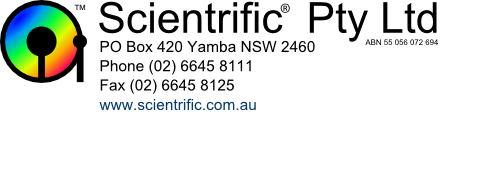
 ,
,